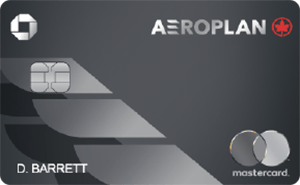The Points Collector’s Guide to Air Canada Aeroplan
Air Canada's Aeroplan loyalty program is good for people based in North America who fly Star Alliance airlines.
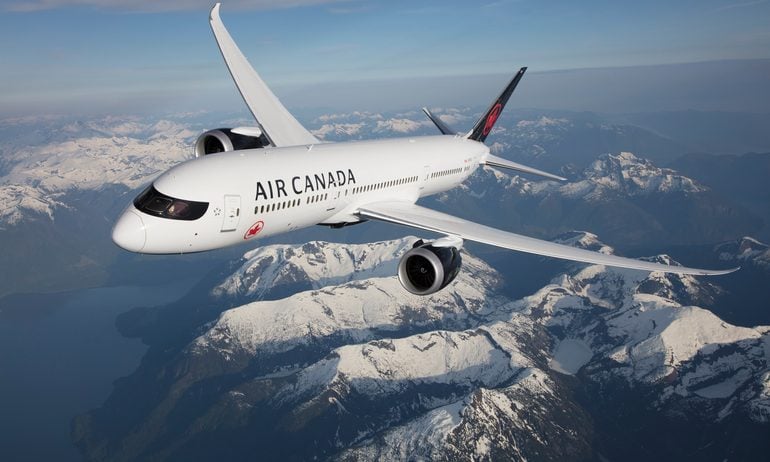
Many or all of the products on this page are from partners who compensate us when you click to or take an action on their website, but this does not influence our evaluations or ratings. Our opinions are our own.
Founded in 1937, Air Canada is the flag carrier of Canada. It's Canada’s largest passenger airline and the fifth largest passenger airline in North America, based on both fleet size and passengers carried. So is it worth flying (and if so, participating in its loyalty program, Air Canada Aeroplan)?
Air Canada is a middle-of-the-road type of airline. It's not a budget airline with stereotypically abysmal service, but it's generally not considered the creme of the crop when it comes to airlines either. But if you frequently find yourself flying in Canada, you'll likely find yourself on an Air Canada flight at some point or another given its sheer size. And that's not a bad thing.
Air Canada is a founding member of Star Alliance, which is the world’s largest airline alliance. As an airline alliance member, Air Canada connects to 1,300 destinations in nearly 200 countries worldwide through its 25+ member airlines. When you participate in Air Canada’s Aeroplan loyalty program, you can earn and redeem points with Air Canada, Star Alliance airlines and other partner airlines. Then, turn around and spend them on future free Air Canada flights — or fly someplace a bit closer to the equator through other airlines in the Star Alliance.
» Learn more: How to save money on international flights
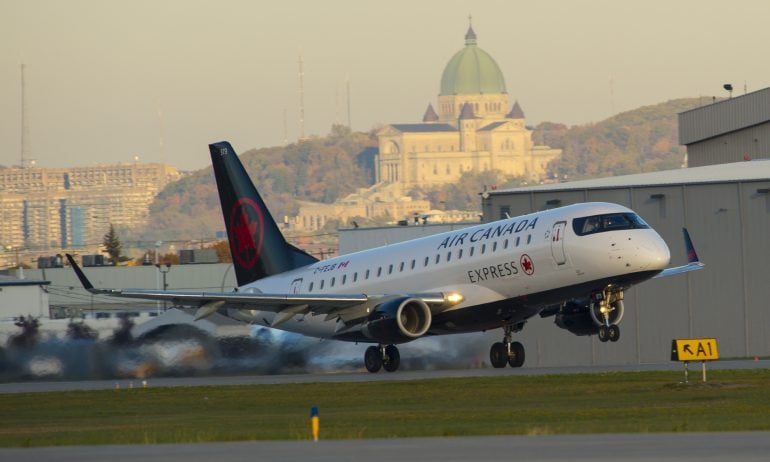
Air Canada Express E175. Photo courtesy of Air Canada.
About Air Canada
Headquartered in Montreal, with additional hubs in Toronto and Vancouver, Air Canada offers direct service to 220 destinations across six continents under three brands: Air Canada proper, regional operator Air Canada Express and subsidiary Air Canada Rouge.
Air Canada fare classes
Air Canada offers three cabins — economy, premium economy and business class.
Within those three cabins comes seven fare types — economy basic, economy standard, economy flex, economy comfort, economy latitude, premium economy and business.
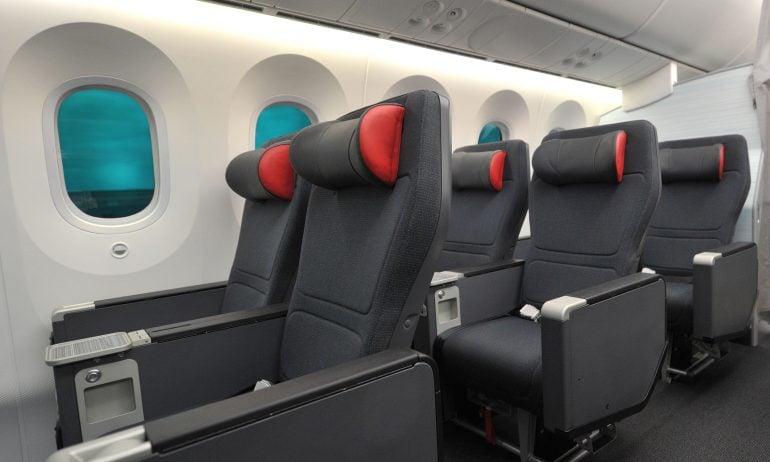
Seats in the Premium Economy cabin. Photo courtesy of Air Canada.
Depending on the aircraft flown, cabins may also go by different names and layouts. For example, on the A319 and A321, aircraft, you might opt for the Premium Rouge cabin which features large comfortable seats in a 2x2 seat configuration. No middle seats here.
On some Boeing 787, 777 and 767 aircraft or Airbus A330 aircraft routes, business class is referred to as Air Canada Signature Class. This class guarantees an open suite in the form of an Executive Pod on the 787 and 777 and a Classic Pod on the 767 and A330. In all cases, pod seats convert to fully flat beds, maxing out at 79 inches in the Executive Pod. Air Canada Signature Class is available on European, Asian, Pacific and South American routes.
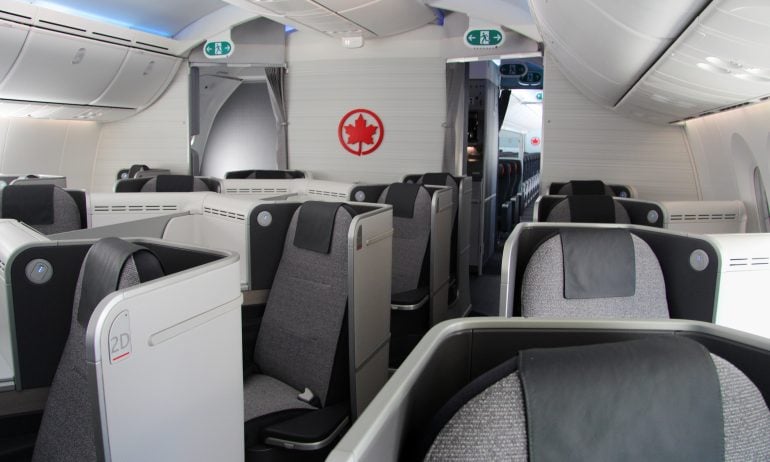
Seats in the Air Canada Signature Class cabin. Photo courtesy of Air Canada.
» Learn more: How to make the most of economy class on Air Canada
Main U.S. routes
Due to its proximity to the U.S., Air Canada offers numerous flights between its Canadian hubs and the U.S. daily, as well as direct service from smaller Canadian airports to the U.S. There are multiple flights to cities like Boston, New York and Detroit, as well as other popular tourist destinations like Fort Lauderdale and Fort Myers, Florida, and San Francisco.
Air Canada uses aircraft with its Signature Class (top business class product) on several nonstop, medium haul routes between the U.S. and Canada, making it the only North American airline with lie-flat seats between these two markets. Signature Class is available on flights between Toronto and Los Angeles, San Francisco and Vancouver, as well as between Vancouver and Montreal or Newark, New Jersey.
Aeroplan loyalty program
Air Canada’s loyalty program is called Aeroplan. It was completely overhauled in 2020 with new rules for earning and redeeming points. Members earn Aeroplan points and can work towards elite status.
How to earn Air Canada Aeroplan points
Earn by flying
Earn Aeroplan points when flying Air Canada in all classes except economy basic. Points are earned based on the amount paid for your ticket. You can also earn points by flying any Star Alliance member airline, as well as on eligible flights with Air Canada’s other partner airlines. These include Air Serbia, Azul, Cathay Pacific, Etihad and Vistara.
» Learn more: Your guide to the Star Alliance
Earn by spending on credit cards
Before you start using Aeroplan miles, you have to earn them. Beyond flying, another way to amass a large number of Aeroplan miles is to earn a sign-up bonus from the Aeroplan® Credit Card.
Earn by transferring
Aeroplan is currently a transfer partner with AmEx, Bilt, Chase and Capital One, and transfers are instant. AmEx Membership Rewards, Bilt Rewards, Chase Ultimate Rewards® and Capital One miles can be transferred at a rate of 1:1.
Other ways to earn
Travel partners: Earn points with over 15 hotel and car rental partners such as Marriott and Avis.
Shopping portal: Earn points with over 150 different retailers when shopping through the Aeroplan eStore.
Buy points: Buy points at a standard rate of about $25 ($30 Canadian) per 1,000 points.
What are Air Canada Aeroplan points worth?
So you've earned a bunch of points, but what are Air Canada Aeroplan points actually worth? Based on our analysis, the value of 1 Aeroplan point is 1.4 cents . Using that figure, you can estimate the value of your own Air Canada Aeroplan stash using this calculator:
How to redeem Aeroplan points for maximum value
Aeroplan uses a somewhat complicated award pricing system that’s both zone-based and distance-based. Award charts detail pricing between and within four travel zones — North America, Atlantic, Pacific and South America — further broken down by distance and class. That's good and bad. It can make finding great award flights complicated, but it also means there are plenty of Air Canada Aeroplan sweet spots with especially-great redemptions.
On its own flights, Aeroplan employs a dynamic award pricing system within the chart ranges. For partner airlines, award prices are fixed.
Fly Air Canada
For flights on Air Canada, the dynamic pricing system tries to match the points price with the current cash price. On the one hand, that means there’s no official points price; on the other, it means that all flights and seats are fair game. Aeroplan’s award chart offers guidance in the form of a likely range of expected price, and its website has a Points Predictor Tool to further help you.
When you book a seat in signature class, you also get a VIP experience on the ground. Air Canada Signature Service includes dedicated check-in counters, expedited security clearance, exclusive boarding lanes, priority baggage handling and more. There's also lounge access, which includes chef-designed meals and a quiet place to wait before your flight.
On board, Air Canada Signature Class customers are treated to exclusive service and amenities, including a massage function on the chairs.
Fly on partner airlines
It’s often much simpler (and smarter) to use Aeroplan points on their partner airlines, for which flights have fixed award costs. The catch here is that award seats must be available (versus Air Canada’s anytime, any flight on points policy).
Though Aeroplan has eliminated cash surcharges on all award tickets, even for its own flights, booking a partner ticket requires you pay an added partner booking fee. This flat fee costs around $32 ($39 Canadian) per ticket.
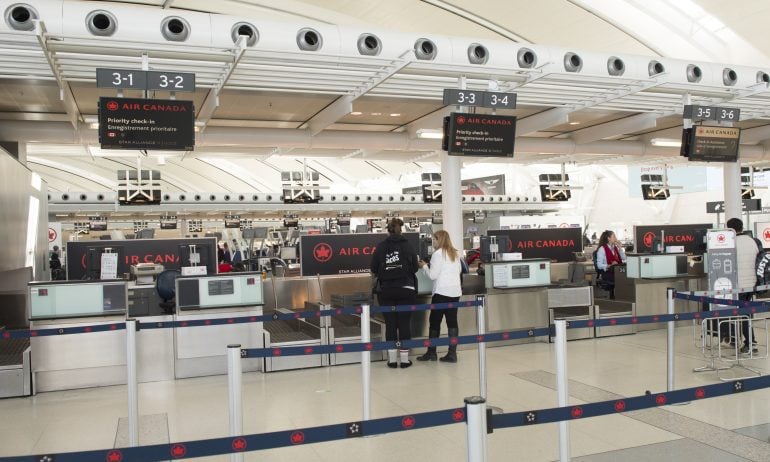
Photo courtesy of Air Canada.
Other ways to redeem Aeroplan points
Upgrades: Aeroplan points can also be used for flight upgrades on eligible Air Canada flights through a bidding system called AC Bid Upgrade.
In-flight Wi-Fi: Air Canada’s onboard Wi-Fi can be paid with Aeroplan points.
Hotel stays and car rentals: Points can be used for other travel experiences like hotel stays, pulling from a booking engine with over 300,000 hotels and car rentals through various agencies at 11,000 locations worldwide.
Shopping: At Aeroplan’s eStore, points can be used on merchandise, activities, travel experiences and retailer gift cards.
Vacation packages: Aeroplan points can be used to pay for an Air Canada Vacation package in its entirety.
Aeroplan Elite Status (formerly Air Canada Altitude)
With the relaunch of the Aeroplan loyalty program, Air Canada reconfigured its elite status program and rebranded from Air Canada Altitude to Aeroplan Elite Status.
Status levels and benefits
There are five status tiers: Aeroplan 25K, 35K, 50K, 75K and Super Elite. Each level offers its own Core Benefits as well as Select Benefits, where you choose from a selection of extra perks. Benefits include priority reservation services, priority airport services (e.g., increased baggage allowance), Maple Leaf Lounge access and eUpgrade credits, all of which vary by status.
The full list of benefits, broken down by status level, can be found here.
Aeroplan’s Select Benefits for elite members allows frequent flyers to choose which benefits matter most to them beyond their standard Core Benefits. Options include elite status for a friend, Aeroplan Elite Status bonus with Air Canada and select airline partners, eUpgrade credits, and one-time guest passes to the Maple Leaf Lounge.
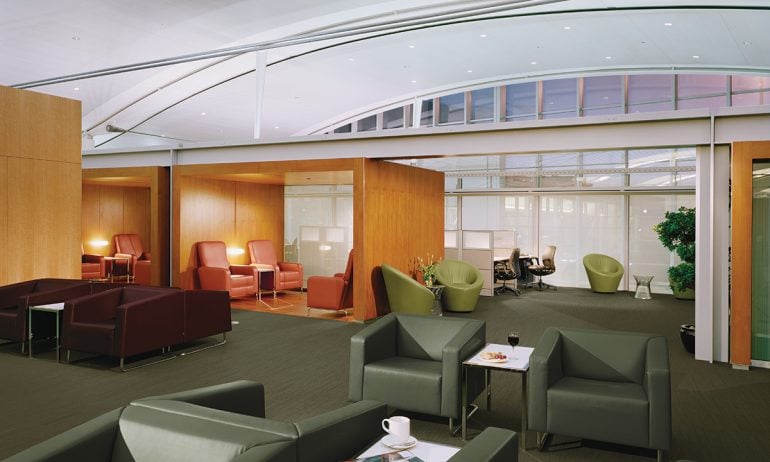
The Maple Leaf Lounge in Toronto. Photo courtesy of Air Canada.
These Select Benefits must be chosen as bundles and vary in size as you move up the status ladder.
How to earn Aeroplan Elite Status
Achieving the various tiers of Aeroplan Elite Status will depend on the following factors:
How far and/or how often you fly with Air Canada and Star Alliance member airlines, quantified as Status Qualifying Miles (SQM) and/or Status Qualifying Segments (SQS).
The amount spent on Air Canada-operated or Air Canada-ticketed flights within a calendar year, counted as Status Qualifying Dollars (SQD).
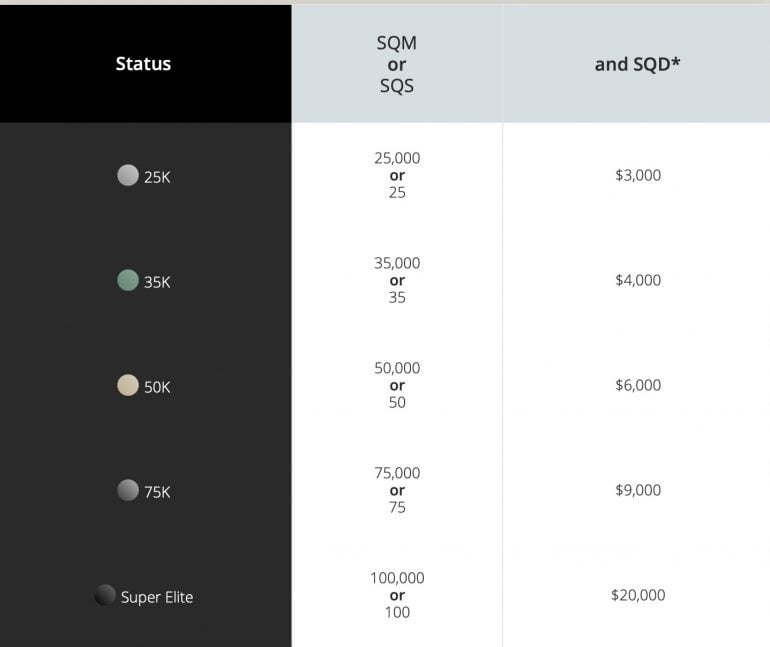
Status tiers are named based on the number of SQM required to achieve status. For example, 35K status requires 35,000 SQM. But this doesn’t mean banking an actual 35,000 flight miles. SQM are determined by both distance and class flown. Note that already having elite status will multiply the number of Aeroplan points you earn per flight, but not the SQM.
The first qualification can also be achieved by flying 35 SQSs annually, which is good for those who do a lot of short haul flights.
Aeroplan offers a program called Family Sharing, where up to eight family members can combine their points for award redemptions. This allows families to pool points without any transfer fees and to achieve higher balances together.
However, while it’s either SQM or SQS that need to be reached, the SQD qualification also has to be reached. Thankfully, non-Canadian residents only need to meet half of the published SQD spend. Returning to our example, Americans need only $2,000 to meet the threshold for the SQD portion of 35K elite status.
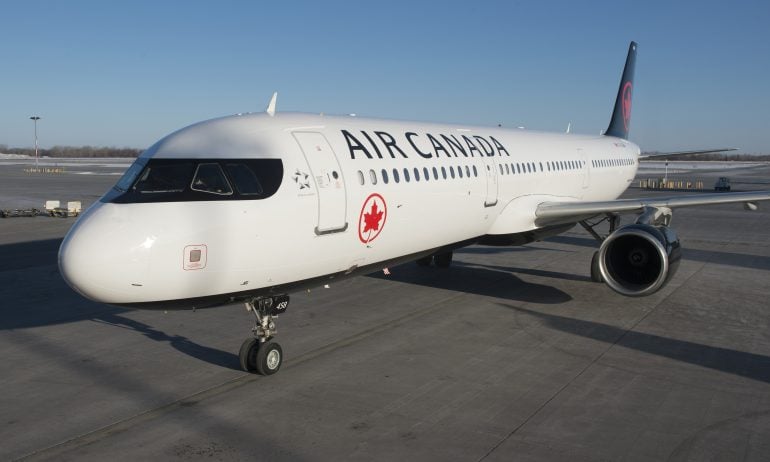
An Air Canada Airbus A321. Photo courtesy of Air Canda.
Air Canada Aeroplan, recapped
As the fifth-largest carrier in North America, Air Canada is a major player in the U.S. airline market. Its revamped Aeroplan loyalty program offers solid opportunities to earn and redeem points on flights within the Americas and worldwide and often presents great value for award travel on partner airlines.
How to maximize your rewards
You want a travel credit card that prioritizes what’s important to you. Here are some of the best travel credit cards of 2025:
Flexibility, point transfers and a large bonus: Chase Sapphire Preferred® Card
No annual fee: Wells Fargo Autograph® Card
Flat-rate travel rewards: Capital One Venture Rewards Credit Card
Bonus travel rewards and high-end perks: Chase Sapphire Reserve®
Luxury perks: The Platinum Card® from American Express
Business travelers: Ink Business Preferred® Credit Card
Chase Sapphire Preferred® Card
Travel
Dining
🔥 Huge highest-ever bonus on NerdWallet's 2025 Best All-Purpose Travel Rewards Card is back. Don't miss your rare chance to: Earn 100,000 points when you spend $5,000 on purchases in the first three months. That's worth at least $1,250 toward travel booked through Chase.


